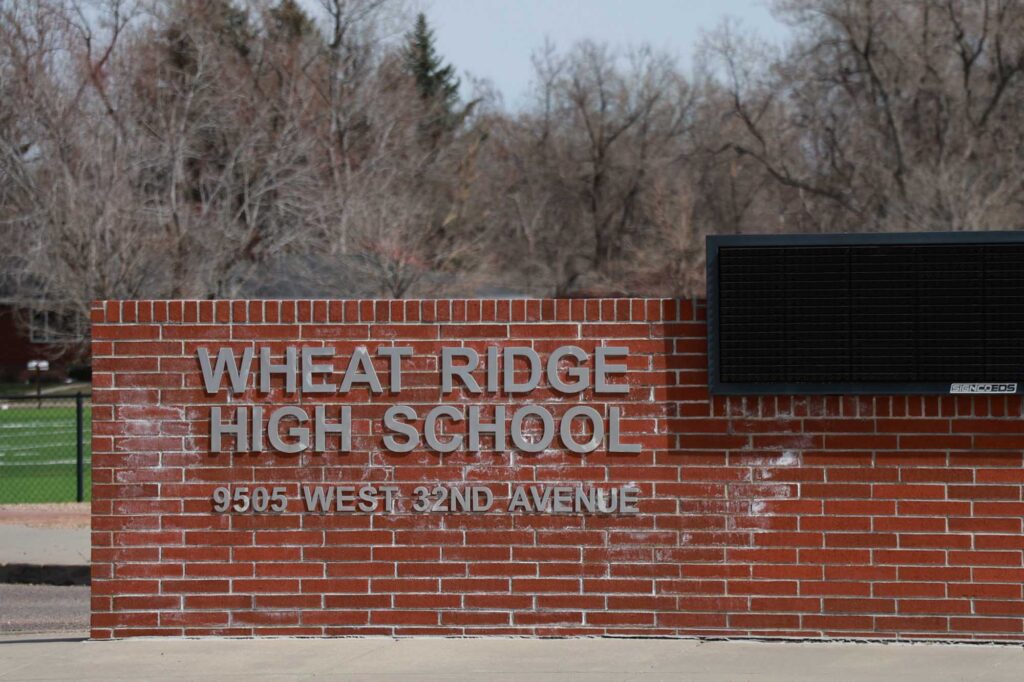Wheat Ridge High School can welcome many students who now attend Jefferson Junior/Senior High School — when and if the Edgewater school closes, according to WRHS Principal Lisa Mahannah.
Jefferson County School District officials recently decided to delay a planned 2026-27 school year closure of Jefferson due to low enrollment for one or two school years. The delay will allow more discussion and planning for Jefferson’s future.
Mahannah said the pause in the Jefferson process “is an opportunity for us to let things unfold.”
“We want to be supportive and helpful to all students so this lets us sit back and make sure we’re ready,” she added.
School district Chief of Staff Lisa Relou noted officials also took the district’s two options for Jefferson’s future off the table while it’s considered. Those were to either operate it as a career technical education campus similar to Warren Tech or an academy model focused on teamwork and hands-on learning with help from businesses and the community.
“We’ll continue to operate the school as is while we continue to monitor enrollment,” Relou said.
Since the district announced its plans in January, the Edgewater Collective — a non-profit group that works with the local Latino community — met with students, families, educators, alumni and community members.
They developed an alternative plan to keep Jefferson open, enhance the bilingualism and biculturalism direction the 7th-12th grade school has taken, and explore how learning and the school building can be restructured for 7th- and 8th-grade students.
Low enrollment means space available
If Jefferson eventually does become “the Warren Tech of the east side of the district,” Relou added, that could lead to more students enrolling in Wheat Ridge High School and Everitt Middle School.
Mahannah said she “was in the shoes” of Jefferson school officials a few years ago as principal at Emory Elementary School in Lakewood when it was closed.
“I’m able to bring what I learned going through that experience now that I’m here at Wheat Ridge,” she explained, “and apply it to whatever happens here to make sure we welcome all students. I’m confident they’ll all receive a good education.”
Mahannah also noted since Emory was a dual language school, she worked closely with Edgewater schools and is familiar with their issues and concerns.
“I know we’ll be ready to support them in any way we can and I know my colleague at Everitt will be, too,” she said.
Mahannah noted space is not an issue at Wheat Ridge High School. It has 932 students this school year and a capacity of 1,703, according to an online district dashboard.
“If we have anywhere from 1,000 to 1,200 kids, it will be more efficient than is now,” Mahannah added. “And the teachers would be very comfortable with 1,300 to 1,400 kids.”
The district dashboard shows Everitt has 456 students and a capacity of 895 6th-8th graders.
Mahannah also noted Wheat Ridge already has students who live in Edgewater attending classes, as do others from other district attendance areas and the metro Denver area.
“We have one family who drives their kids in from Brighton every day,” she said.
Mahannah added familiarity with diverse populations would help Wheat Ridge welcome all students from Jefferson who may attend in the coming years.
“This is a great community, the schools are fantastic and they’re doing great things,” she stated. “I know if we have more kids enrolled, that success would continue.”
Enrollment numbers, timeline details
Meanwhile, the collective will form a team of 15 educators and staff, parents and student leaders to meet regularly through the fall to continue to put together a plan for Jefferson’s future.
The group also wants a five-year memorandum of understanding with the district to ensure the plan is fully implemented.
Relou said the district has closed 21 schools over the last few years and overall enrollment has declined for the last two decades — similar to public school districts across Colorado and nationwide — due to lower birth rates. The trend is projected to continue.
The Edgewater attendance area was the first one measured after the school board ordered a district-wide look at school boundaries. A more than a year-and-a-half-long study was done due to the Edgewater schools having some of the lowest enrollment numbers in the district, Relou noted.
The latest figures show Jefferson with 601 students, 510 under its 1,111 capacity, making it difficult to offer a quality high school experience, Relou stated.
Meanwhile, Alameda Junior/Senior High School — with the same grade levels — had 1,002 students, 356 students short of its 1,358 limit of 7th-12th graders.
No final recommendation regarding Jefferson’s future is likely to be presented to the school board this year, Relou said, partly due to the timing of the district’s enrollment system for the upcoming school year.
The community plan developed by Edgewater residents under the guidance of the collective also continues to be considered, Relou noted.
“It’s a challenging situation,” she said of the possible closure or future use of Jefferson and other area schools.
“Within a five-mile radius of Jefferson, you have high schools in Wheat Ridge, Alameda and Lakewood with 2,800 empty seats,” Relou said. “When you consider the middle schools that feed those high schools, there are 3,200 empty seats.”
“It will take all of us working together to find the best solution,” Relou added. “We have to make sure all students have the best possible experience no matter which school they attend. (The district) just has too many schools” to serve current and likely future student populations.






